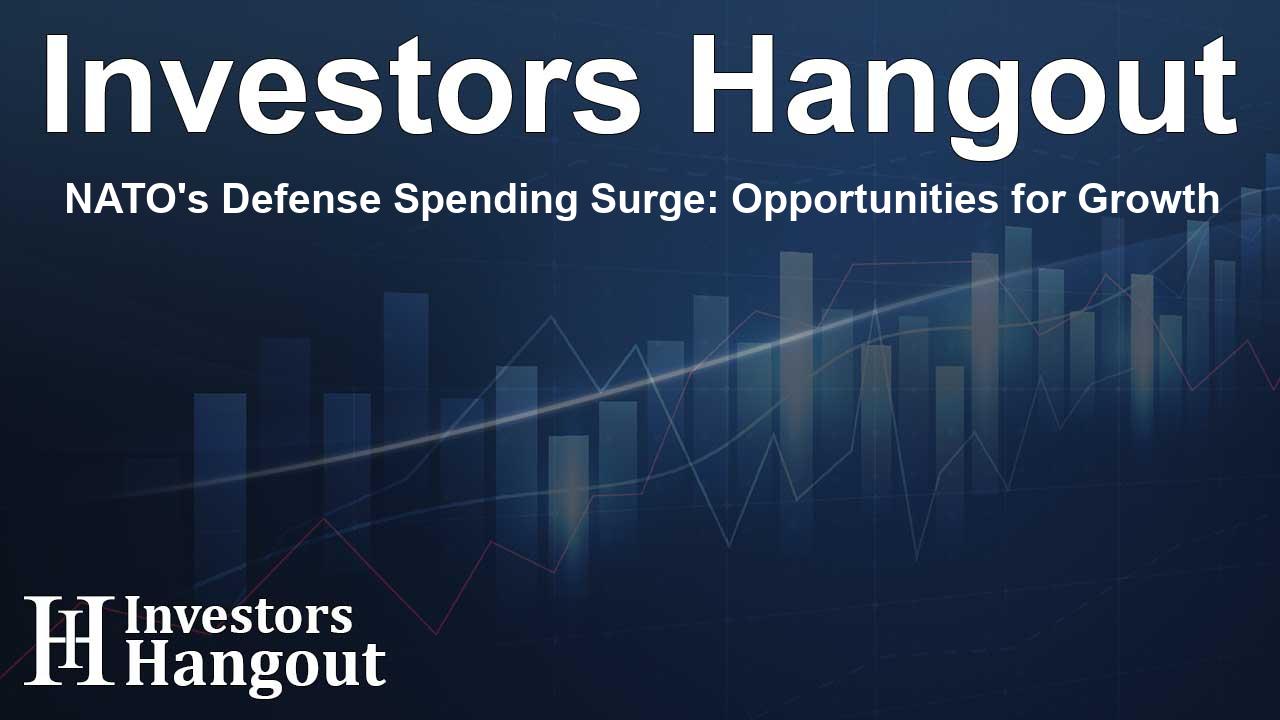NATO's Defense Spending Surge: Opportunities for Growth

The Rise of NATO Defense Expenditure
NATO is once again in the spotlight, echoing the militaristic fervor seen decades ago under President Ronald Reagan. This strategic resurgence is prompted by escalating global tensions and a growing commitment among member states to heighten defense capabilities.
Recently, the NATO alliance formulated an ambitious plan to augment defense spending to 5% of GDP by the year 2035. This marks a significant increase from the previously established 2% target. The plan prioritizes core military needs, ensuring that countries meet a minimum threshold of 3.5% of their GDP allocated to defense.
The Influence of Leadership Changes
NATO Secretary-General Mark Rutte openly acknowledged the influence of former President Donald Trump in pushing for increased spending commitments. The sentiment of “peace through strength” resonates strongly, echoing historical precedents as leaders emphasize the necessity for serious military expenditures to secure national interests.
Trump's focus on ensuring quality American-made military hardware speaks volumes about the potential for the U.S. defense industry to thrive in this renewed climate of heightened military readiness.
The Global Landscape of Conflict
The backdrop for this ramped-up spending is a world that increasingly appears prone to conflict. The Global Peace Index indicates that state-based conflicts have reached their highest level in decades, with 59 active conflicts engaging various nations around the globe.
The uncertainty stemming from Russia’s ongoing military engagement in Ukraine only intensifies worries. Moreover, China’s substantial military growth, particularly its advancements in missile systems and naval operations in the South China Sea, raises the stakes further.
Compounding these tensions are recent hostilities in the Middle East involving Iran, which escalated the security dynamics in the region. These events create a compelling case for NATO’s urgent call to arms.
Proactive Measures Among NATO Members
Some NATO nations are already taking decisive actions, choosing not to wait until 2035 to bolster their military budgets. For instance, Poland is committing 4% of its GDP to defense, leading the charge among NATO members. Germany is aligning its spending trajectory, adjusting its constitutional restrictions to achieve a minimum of 3.5% by 2029. Meanwhile, the UK has made significant upgrades to its military capabilities by acquiring advanced F-35A fighter jets.
In the United States, a noteworthy proposal by President Trump suggests an $893 billion defense budget for 2026. This plan appears to focus on next-gen technology, emphasizing drones and missiles while reducing investment in traditional military assets.
Transforming the Defense Sector
The narrative surrounding the defense industry is evolving. Historically viewed as a stable sector relying on government contracts, the industry is beginning to be perceived as a dynamic growth space. Analysts at Stifel highlight this shift, indicating that we are entering a new arms race that encompasses not only conventional weapons but also advances in artificial intelligence, cyber warfare, and aerospace technology.
With U.S. defense budgets remaining at historically high levels and European defense spending rising significantly, there’s an emerging landscape that offers lucrative opportunities. In 2024, European defense outlays surged to $693 billion, a change that sets the stage for strategic partnerships and innovation.
This heightened investment climate can benefit key players in the defense industry, particularly those specializing in drones, missile systems, and cybersecurity technologies. As NATO allies commit to increasing their defense capabilities, American defense companies stand ready to capitalize on this long-term trend.
Investors looking towards the future of defense can find optimism in this renewed focus on military investment. The next decade promises to be transformative, with the potential for sustained growth in the sector.
Frequently Asked Questions
What prompted NATO's increased defense spending commitment?
NATO's decision to increase spending is primarily driven by rising global tensions and the need for enhanced military readiness among member states.
How much are NATO countries expected to spend on defense by 2035?
NATO aims to raise defense spending to 5% of GDP by 2035, with a required minimum of 3.5% for core military needs.
Which countries are already increasing their military budgets?
Countries like Poland, Germany, and the United Kingdom are taking proactive measures, with Poland aiming for over 4% of GDP by now and Germany adjusting its debt rules for military spending.
What does the growing military budget mean for investors?
The increased defense spending indicates potential growth for defense companies, particularly those focusing on advanced technologies like drones and cybersecurity.
Why is the current defense spending landscape significant?
This new emphasis on defense marks a shift from traditional spending patterns, creating a dynamic environment that fosters innovation and strategic partnerships in the defense industry.
About The Author
Contact Dylan Bailey privately here. Or send an email with ATTN: Dylan Bailey as the subject to contact@investorshangout.com.
About Investors Hangout
Investors Hangout is a leading online stock forum for financial discussion and learning, offering a wide range of free tools and resources. It draws in traders of all levels, who exchange market knowledge, investigate trading tactics, and keep an eye on industry developments in real time. Featuring financial articles, stock message boards, quotes, charts, company profiles, and live news updates. Through cooperative learning and a wealth of informational resources, it helps users from novices creating their first portfolios to experts honing their techniques. Join Investors Hangout today: https://investorshangout.com/
The content of this article is based on factual, publicly available information and does not represent legal, financial, or investment advice. Investors Hangout does not offer financial advice, and the author is not a licensed financial advisor. Consult a qualified advisor before making any financial or investment decisions based on this article. This article should not be considered advice to purchase, sell, or hold any securities or other investments. If any of the material provided here is inaccurate, please contact us for corrections.
